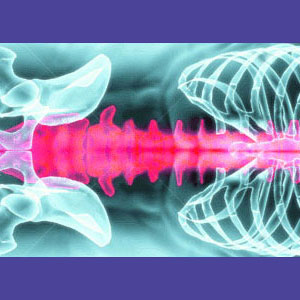
Lower back pain lying down can negatively impact the ability to rest and sleep. Reclining lower back pain can bring misery to a whole new level, since it deprives patients of relaxing in a prone, supine or fetal position. Although rare compared to sitting or standing low back pain, symptoms that are experienced when lying down can be just as disruptive to a normal life as any variety of lumbar dorsalgia.
Lying down is a time to rest and recuperate from physical exertion and stress. The body is organically engineered to find comfort when reclining and sleep is certainly facilitated in this position. However, when pain prevents a patient from enjoying the natural benefits of a reclined posture, then the collateral health consequences can accumulate quickly.
This discussion details the occurrence of low back pain which occurs when the patient lies down. We will examine why reclining low back discomfort occurs, as well as provide some simple solutions that work well for solving many patients’ pain problems.
Lower Back Pain Lying Down Symptoms
Most patients who report reclining lower back pain do so after lying for some time. Very few cite immediate onset symptoms upon first lying down. About half of the total number of affected patients report falling asleep, then waking at some point due to pain and being unable to fall back asleep. Most report getting up at night to sit, walk or stand before attempting to sleep again. The other half of the total number of affected patients cites difficulty falling asleep at all, instead suffering from insomnia on a continual basis.
Most patients report pain where their back touches the mattress. This is particularly so with back sleepers. Fetal position sleepers often have radiating pain from the lower back into the buttocks and legs. Stomach sleepers most commonly report deep, centralized pain in the hollow of the lower back.
About 30% of affected patients report suffering from recurring spasms in the back when lying down to rest or sleep. These spasms can be terrifying, as they often involve protracted periods of acute pain until the cramp passes.
Causes of Lower Back Pain When Reclining
There are some rare structural issues that might be exacerbated due to particular reclining postures. However, it must be noted that these structural causations are the extreme exception to the rule, since as mentioned, the body is designed to find comfort when reclining. Sometimes, it is not necessarily the position which is causing the pain, but the circumstances under which the position is assumed, such as the use of a poor, unsupportive mattress, reclining with an overly thick or thin pillow or poor sleep ergonomics.
Some of the structural diagnoses that may be worsened in very rare instances by particular sleep postures include herniated discs, symptomatic scoliosis, spondylolisthesis and various muscular pain issues.
We find that the majority of people who experience pain when reclining are suffering from ischemia which is worsened in a horizontal position. When there is already decreased supply of blood and oxygen to affected bodily areas in the lower body, the circulation will further suffer reduction when the body becomes horizontal. This is simply common sense. Additionally, since sleep is a time when the subconscious is in control of the body, it is also logical that these mindbody pain syndromes become more active, with many patients reporting restless sleep and/or disturbing dreams preceding pain in many instances.
Preventing Lower Back Pain Lying Down
Of course, there are many lower back pain treatments available, but these might not be necessary, given the specific nature of reclining-related dorsalgia expressions. Therefore, we recommend considering these helpful tips before pursuing care that might be dangerous, costly and ineffective (based on the statistical evidence):
Make sure that your pillow and mattress combination works well for you. We generally recommend a medium firm to firm mattress with a quality memory foam topper as the ideal sleep surface, although specific preferences can provide for alternatives, such as cotton futons, inflatable air chamber beds or full memory foam mattresses. We recommend thin pillows for back sleepers, medium to thick pillows for side sleepers and no pillow for stomach sleepers. We recommend using auxiliary pillows in strategic places to prevent rolling or excessive movement when sleeping.
We suggest that the fetal position is ideal for most people and is especially suited for lower back pain sufferers. We advise using a pillow under the top arm and another in between the knees. Back sleepers might find a pillow under both knees might assist them in mitigating pain and sleeping better.
We definitely suggest taking a serious look at the possibility of symptoms being psychogenic. Sleep-related expressions are almost always psychosomatically-influenced and many are purely psychogenic in origin. It is best to stay in constant contact with the subconscious using the various practices detailed in knowledge therapy and/or pain coaching. Do not sleep with repressed issues from the day and do not attempt to sleep with anxiety over the next day’s events. Try to calm the mind before bed and you will definitely benefit both physically and psychoemotionally.
Lower Back Pain > Low Back Pain > Lower Back Pain Lying Down





